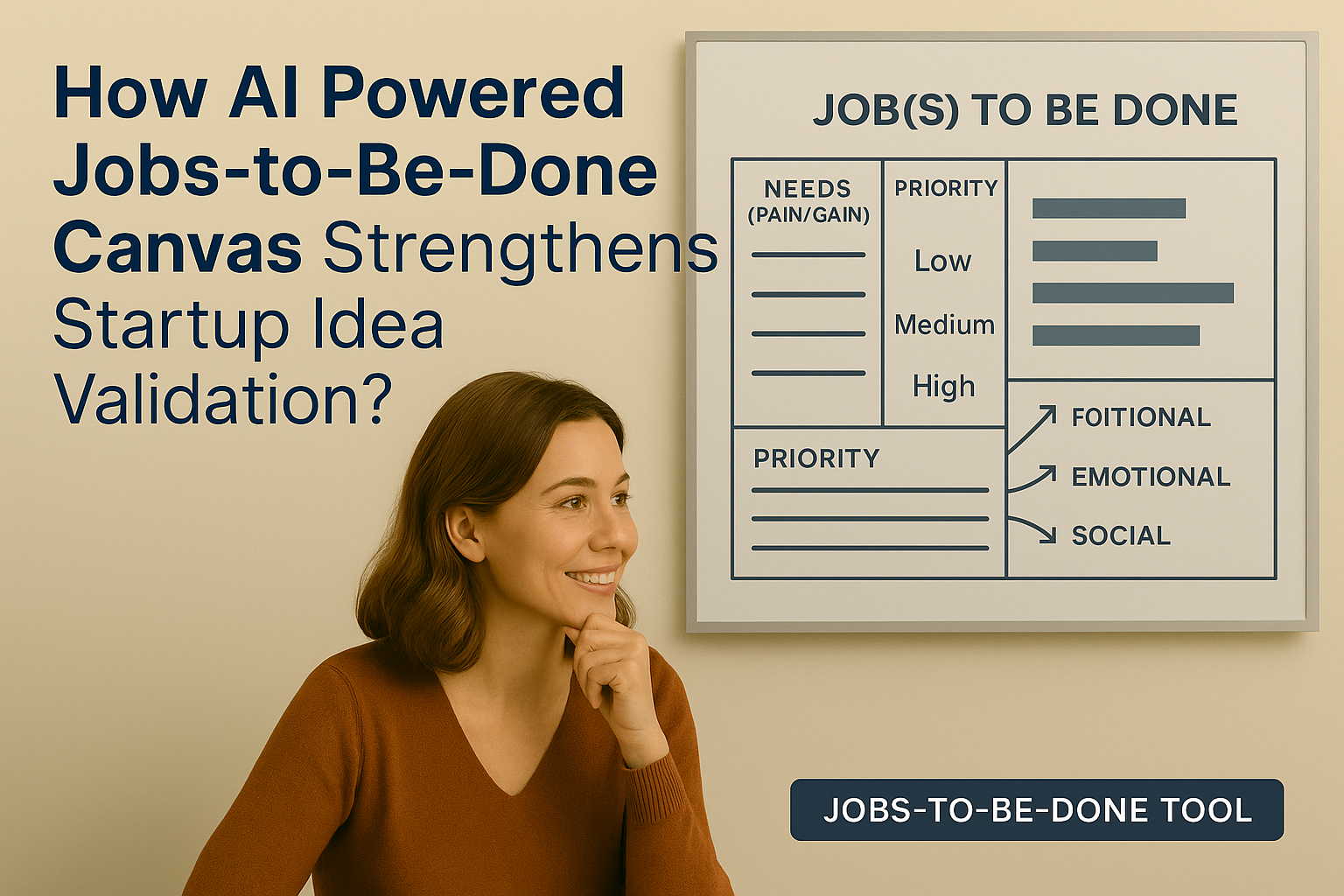How AI Powered Jobs to Be Done Canvas Strengthens Startup Idea Validation?
Understanding what your customers truly need begins with recognizing the job they hire your product to do—not just the features they want. The Jobs-to‑Be‑Done (JTBD) Canvas helps you break down customer motivations into meaningful, outcome-based jobs. When powered with AI, this method becomes a sharp validation tool, uncovering priorities, pain points, and opportunities faster and more accurately.
What Is the Jobs-to‑Be‑Done Canvas?
The Jobs-to-Be-Done (JTBD) Canvas is a structured framework used to identify, prioritize, and design around the real needs of users by focusing on the jobs they want to get done. It emphasizes not just functional goals but also emotional and social motivations. The canvas helps startups and innovation teams define the core job in one sentence, then break it down into:
- Needs (Pain/Gain): Specific user problems to solve or benefits to provide.
- Priority (Low–High): How important each need is to the user.
- Job(s) to Be Done: Specific tasks users must complete to achieve the main job.
It then analyzes these jobs through three lenses:
- Functional Component: What the user needs to do (practical tasks).
- Emotional Component: How the user wants to feel (internal drivers).
- Social Component: How the user wants to be perceived by others (external validation).
By mapping these layers, the JTBD Canvas enables teams to design solutions that are deeply aligned with real user demands, reducing product risk and enhancing market fit.
How Does JTBD Canvas Support Validation?
Using JTBD canvas guides startups in multiple validation-critical ways:
- Hypothesis Framing: JTBD anchors assumptions in clearly defined customer jobs and desired outcomes.
- Risk Reduction: Identifying unmet needs ahead of time ensures your solution targets real pain points.
- Strategic Alignment: Teams align around shared understanding of who you're serving and why it matters.
- Opportunity Mapping: Breaking down the job process helps spot neglected steps or emotional triggers that competitors miss.
This framework enables startups to test and refine core problems before investing in building solutions.
How Does AI Support Creating a JTBD Canvas?
AI significantly boosts the efficiency and depth of JTBD work:
- Job Performer Identification: AI can scan demographic and behavioral data to surface likely job performers in your market.
- Insight Extraction from Interviews: Through NLP analysis of exploratory interviews, AI can categorize feedback into job steps, pains, and gains—ready to fill the canvas.
- Outcome Prioritization Models: Machine learning can rank job outcomes by importance and current satisfaction—emphasizing unmet needs.
- Iterative Canvas Refinement: As new research comes in, AI tools can update the canvas dynamically, surfacing changes in motivations or context.
Rather than replacing human insight, AI amplifies it—letting founders validate faster, clearer, and more contextually.
The JTBD Canvas reframes innovation through the lens of customer progress—not product features. By integrating AI into this canvas, startups gain speed, clarity, and precision in understanding what jobs to solve. This combination deepens customer empathy and positions you to deliver solutions that customers actually need—and will hire.






